When snoring becomes a problem which products actually work?
 Several years ago I discovered that I had a snoring problem. Well, actually it was my wife who discovered my problem. In an effort to find relief and save our marriage, I began a quest to find a stop snoring product that actually works.
Several years ago I discovered that I had a snoring problem. Well, actually it was my wife who discovered my problem. In an effort to find relief and save our marriage, I began a quest to find a stop snoring product that actually works.
My search began on the internet and what I found was a plethora of products being sold that all claimed to put an end to your snoring. Everything from oral sprays and nasal sprays to chin straps, pills, and even pillows. Then there were, of course, the natural remedies which work for some but didn’t work for me. I, however, needed something that would silence the sound of my snoring before the two of us began sleeping in separate bedrooms. I literally spent hours over the course of several days reading review after review of the mentioned products. Unfortunately, each time I would hit a roadblock as customers who commented on these products often dismissed their effectiveness.
Seeking the advice of my doctor
 As time went on, my snoring continued so I decided to seek the advice of my doctor who evaluated my snoring and concluded that well, I simply snore. I asked him about treatment options and he suggested that I try the basics which included sleeping on the side, elevating the head, avoiding alcohol and so on. Having tried all of these suggestions I asked him if there were any additional solution. This is when he told me about the oral appliance, also referred to as snoring mouthpieces.
As time went on, my snoring continued so I decided to seek the advice of my doctor who evaluated my snoring and concluded that well, I simply snore. I asked him about treatment options and he suggested that I try the basics which included sleeping on the side, elevating the head, avoiding alcohol and so on. Having tried all of these suggestions I asked him if there were any additional solution. This is when he told me about the oral appliance, also referred to as snoring mouthpieces.
Okay, this sounds interesting. He further explained that these devices work by holding the mandible (lower jaw) in the forward position while sleeping. The advanced position of the jaw tightens the muscles surrounding the airway, preventing them from vibrating against each other. The vibration of tissues in the airway is typically the primary cause of the snoring sounds that we are all familiar with. He had me sold and I was ready to move forward until of course, he started talking cost.
There are actually several different brands available including – the Tap III, Somnomed, Silent Partner, Somnodent, Myerson EMA, Snore Silencer Pro, SnoreFree, the SUAD device, and the list goes on. “So how much will one of these fancy sports mouth guards cost me,” I ask. My doctor responds “$1,500 – $3,500 for the device plus the cost of the initial examination and follow-up appointments. Would you like a referral?” “Whoa,” I responded. “I’ll have to think about that one.”
Less costly alternative to custom oral appliances
 Later that night I began to search online for some type of at home oral appliances. You know, the do-it-yourself version of a mouthpiece. I found quite a few such devices and astonishingly, most of them cost less than $100. Well, a hundred dollars certainly sounds more reasonable than $1,500 plus. After doing some searching I started to realize that within the OTC snoring mouthpiece industry there was a bit of debate as to which device was most effective at preventing snoring. Some devices offered features such as the ability to adjust while others were held in a fixed position. Some offered breather ports while others did not. Some created a custom impression using boil and bite technology while others were sent off to a laboratory to be created. It soon became increasingly clear that making a decision among OTC oral snoring devices were not going to be easy at all.
Later that night I began to search online for some type of at home oral appliances. You know, the do-it-yourself version of a mouthpiece. I found quite a few such devices and astonishingly, most of them cost less than $100. Well, a hundred dollars certainly sounds more reasonable than $1,500 plus. After doing some searching I started to realize that within the OTC snoring mouthpiece industry there was a bit of debate as to which device was most effective at preventing snoring. Some devices offered features such as the ability to adjust while others were held in a fixed position. Some offered breather ports while others did not. Some created a custom impression using boil and bite technology while others were sent off to a laboratory to be created. It soon became increasingly clear that making a decision among OTC oral snoring devices were not going to be easy at all.
The seemingly endless number of features that were available in each mouthpiece presented a challenge that I wasn’t quite prepared to take on. After reading over literally hundreds of pages of information and medical studies on oral appliances, I had I fairly good idea of what was considered desirable and what was not. However, I soon realized that while a device may work for one individual, it may not work for another. In other words, there was no “best” oral appliance for everyone per se. With this in mind, I set out on a journey to find which ones actually works and which ones do not. After all, purchasing twenty internet ordered devices would still cost significantly less than just one that was custom fitted by a doctor.
Snoring mouthpiece experiment
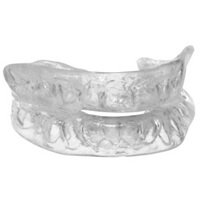 Over the next year or two, I had ordered well over a dozen OTC snoring devices. Most differed slightly while some were designed like no other. Here are a few notable features that I considered while going through each device.
Over the next year or two, I had ordered well over a dozen OTC snoring devices. Most differed slightly while some were designed like no other. Here are a few notable features that I considered while going through each device.
- Breather holes vs non-breather holes
- Thermoplastic material vs acrylic resins materials
- Adjustable vs. non-adjustable mandibular setting
- Soft construction materials vs. hard construction materials
- Boil and bite fitted vs laboratory created
- Tongue stabilizer vs non-stabilizer
- BPA free vs non-BPA free
- FDA cleared vs Non-FDA cleared
- Clinically studied vs. no clinical study
- Jaw advancing vs. tongue stabilizing
You may be wondering why I would order so many different products. The end goal was to find a device that offered both comfort and longevity while keeping the overall price in mind. For several months I ordered mouthpieces and put them to the test. Some were only used for a couple weeks and then stored away while others I still use today.
The results
 The results of this experiment may surprise you as it certainly did, in fact, come as a surprise to me. Almost all of the devices that I experimented with did, in fact, stop my snoring. So we know that the principle of the mandibular advancement device is in fact valid.
The results of this experiment may surprise you as it certainly did, in fact, come as a surprise to me. Almost all of the devices that I experimented with did, in fact, stop my snoring. So we know that the principle of the mandibular advancement device is in fact valid.
There was, however, some major differences when it came to comfort and usability. For instance, some more primitive devices made wearing the appliance feel much like having a mouth full of plastic or the feel as if someone stuffed a sock in my oral cavity. Others proved to be deficient when it came to durability and long useful life. Then there was the issue of adjustability. While I was able to obtain a fairly good impression and advancement position with several simple boil and bite devices, some had to be refitted by completing the fitting process over and over again in order to achieve the proper advancement. From this, I learned that in many cases, having the ability to adjust the advancement of a MAD’s was a nice feature.
In the end, I created this guide table which will give you an idea of what’s available on the market. This table allows you to sort by categories such as total price, ranking, device type, and product name.
If you are a snorer, I suggest that try out an oral appliance (or several if you are feeling ambitious). As mentioned, there are some really great devices on the market that seem to work quite well. Take a look at the mentioned guide table and choose a device that makes sense to you. If your interested, I created this page which offers my recommendation based on the many products that I have tried personally.
When faced with a snoring problem it’s important that you find relief quickly as what may seem like a laughing matter can easily escalate into larger marital problems. Mouthpieces a real snoring solution that actually works.
Share This Post:

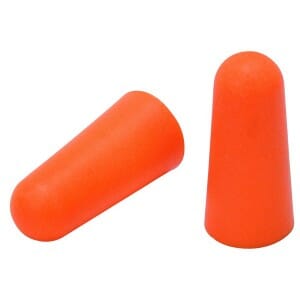
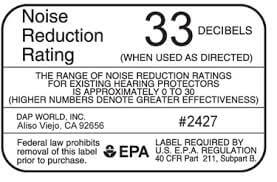 So you have decided to try out a set of earplugs in order to drown out your partner’s loud snoring. What are the best earplugs for snoring?
So you have decided to try out a set of earplugs in order to drown out your partner’s loud snoring. What are the best earplugs for snoring?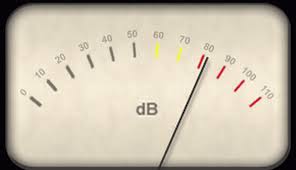 When choosing a pair of earplugs, pay close attention to the NRR rating which is the most important factor that should be used to compare one product to another. The NRR is simply indicating the number of reduced
When choosing a pair of earplugs, pay close attention to the NRR rating which is the most important factor that should be used to compare one product to another. The NRR is simply indicating the number of reduced 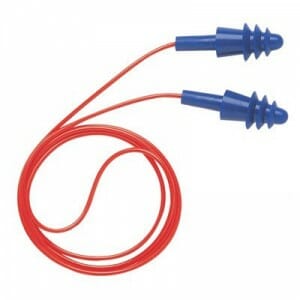 There is some debate when it comes to disposable vs reusable as far as which is better. As for effectiveness, when installed properly a disposable set of earplugs with an NRR of 30 should block out 30 dB of sound just as effectively as a pair of reusable plugs with an NRR of 30. Reusables, of course, offer a long-term cost savings advantage. Keep in mind that special care should be taken while cleaning reusables to avoid ear infections.
There is some debate when it comes to disposable vs reusable as far as which is better. As for effectiveness, when installed properly a disposable set of earplugs with an NRR of 30 should block out 30 dB of sound just as effectively as a pair of reusable plugs with an NRR of 30. Reusables, of course, offer a long-term cost savings advantage. Keep in mind that special care should be taken while cleaning reusables to avoid ear infections. Earplugs are often used to block out the sound of a partners snoring but is this really a solid solution? The reality is that it’s much better to address the source of the sound which in this case is your partner. The fact is, your partner’s snoring could be reduced by using a simple device such as a mandibular advancement splint. In some cases, their snoring may be an indicator of a more serious condition such as sleep apnea and should not be ignored by putting earplugs into your ears.
Earplugs are often used to block out the sound of a partners snoring but is this really a solid solution? The reality is that it’s much better to address the source of the sound which in this case is your partner. The fact is, your partner’s snoring could be reduced by using a simple device such as a mandibular advancement splint. In some cases, their snoring may be an indicator of a more serious condition such as sleep apnea and should not be ignored by putting earplugs into your ears. If it turns out that they simply snore, treating the sounds associated with simple snoring can be achieved using a snoring mouthpiece. These devices range in price between $40-$200 and in most areas are only available online. I’ve experimented with nearly 2 dozen different types of mouthpieces and posted a
If it turns out that they simply snore, treating the sounds associated with simple snoring can be achieved using a snoring mouthpiece. These devices range in price between $40-$200 and in most areas are only available online. I’ve experimented with nearly 2 dozen different types of mouthpieces and posted a 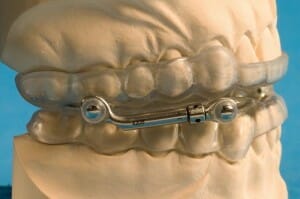 Originally developed in the 1980’s, the snoring relief mouthpiece was commonly referred to as a “mandibular advancement device”, “
Originally developed in the 1980’s, the snoring relief mouthpiece was commonly referred to as a “mandibular advancement device”, “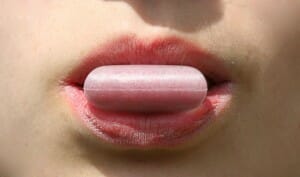

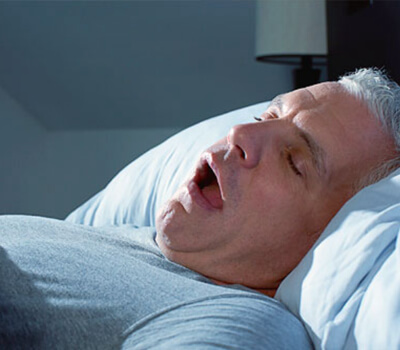 We all know of someone who snores on a regular basis. This person may be a spouse, parent, family member, or perhaps even yourself. Snoring is a common nuisance that has plagued households for centuries and there are no signs of it becoming less prevalent.
We all know of someone who snores on a regular basis. This person may be a spouse, parent, family member, or perhaps even yourself. Snoring is a common nuisance that has plagued households for centuries and there are no signs of it becoming less prevalent. Snoring pillows – These are usually a memory foam pillow used to support your head in such a way that relieves pressure on your airway which keeps it clear. They work by keeping your head elevated at a comfortable level while keeping your chin away from your chest.
Snoring pillows – These are usually a memory foam pillow used to support your head in such a way that relieves pressure on your airway which keeps it clear. They work by keeping your head elevated at a comfortable level while keeping your chin away from your chest.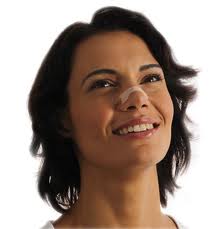 Snoring nose strips – BreatheRight is perhaps the most popular brand of snoring strips. These work by opening narrow or blocked nasal passages and allowing air to flow. If your snoring is caused by blocked passages then this product may provide some relief.
Snoring nose strips – BreatheRight is perhaps the most popular brand of snoring strips. These work by opening narrow or blocked nasal passages and allowing air to flow. If your snoring is caused by blocked passages then this product may provide some relief. Snoring Mouthpieces – This product addresses one of the most common
Snoring Mouthpieces – This product addresses one of the most common 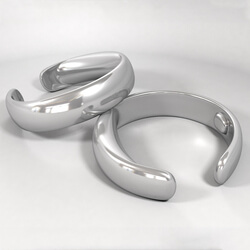 Anti-snoring rings – These devices claim to eliminate snoring by the use of acupressure. The Chinese have used acupressure for thousands of years to treat various ailments. Most acupressure rings are placed firmly on the pinkie finger before going bed. Manufacturers claim that the principle of acupressure relieves snoring.
Anti-snoring rings – These devices claim to eliminate snoring by the use of acupressure. The Chinese have used acupressure for thousands of years to treat various ailments. Most acupressure rings are placed firmly on the pinkie finger before going bed. Manufacturers claim that the principle of acupressure relieves snoring. Positive airway pressure strips – This option has recently become available without a prescription. It’s a bandage-like device that adheres to your nose and uses microvalves which open while breathing in and close while breathing out. The closing action naturally causes positive airway pressure which keeps your airway open.
Positive airway pressure strips – This option has recently become available without a prescription. It’s a bandage-like device that adheres to your nose and uses microvalves which open while breathing in and close while breathing out. The closing action naturally causes positive airway pressure which keeps your airway open.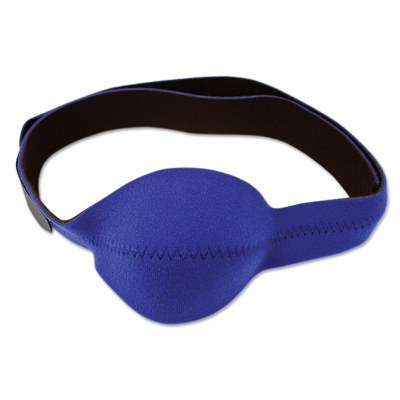 Chin straps – This product physically holds your jaw in the closed forward position which widens the airway, reducing the possibility of restricted breathing. They usually come in several sizes and are usually adjustable
Chin straps – This product physically holds your jaw in the closed forward position which widens the airway, reducing the possibility of restricted breathing. They usually come in several sizes and are usually adjustable Rollover prevention device – Is usually worn around the chest and has a large object located at the rear which prevents you from rolling over onto your back. For positional snorers, remaining on the side instead of the back can prevent snoring from occurring.
Rollover prevention device – Is usually worn around the chest and has a large object located at the rear which prevents you from rolling over onto your back. For positional snorers, remaining on the side instead of the back can prevent snoring from occurring. Nose strips? Chin straps? Rings? With so many options available, most people simply want to know which one is the best. In order to answer this question, you must first understand exactly what causes snoring.
Nose strips? Chin straps? Rings? With so many options available, most people simply want to know which one is the best. In order to answer this question, you must first understand exactly what causes snoring. Snoring pillows, nose strips, rings, and rollover devices simply do not address the issue of loose tissues in the throat. Chin straps may effectively hold the jaw closed yet rarely hold it in the forward position which actually tightens the throat muscles. Positive airway pressure strips are a newer product that uses microvalves to naturally force air through the airway, keeping the airway open. These are clinically proven to be effective 76% of the time but rather than tightening airway muscles, this product works by pressurizing the airway, sort of like a CPAP machine. While impressive, it does not directly address the core problem and is hit or miss when it comes to effectiveness.
Snoring pillows, nose strips, rings, and rollover devices simply do not address the issue of loose tissues in the throat. Chin straps may effectively hold the jaw closed yet rarely hold it in the forward position which actually tightens the throat muscles. Positive airway pressure strips are a newer product that uses microvalves to naturally force air through the airway, keeping the airway open. These are clinically proven to be effective 76% of the time but rather than tightening airway muscles, this product works by pressurizing the airway, sort of like a CPAP machine. While impressive, it does not directly address the core problem and is hit or miss when it comes to effectiveness. This leaves one stop snoring product that effectively treats the most common cause of most snoring. By now you have likely read the name of this website and can venture a guess. The Snoring Mouthpiece is the
This leaves one stop snoring product that effectively treats the most common cause of most snoring. By now you have likely read the name of this website and can venture a guess. The Snoring Mouthpiece is the  The “boil and bite” style is by far the most widely produced mouthpiece design worldwide. Its name is derived from the fact that you must heat the device (usually in boiling water) and then bite down on it after placing into your mouth. While there are some different attributes such as the presence or absence of breathing holes, these are all similar in nature and are all generally effective. One criticism of this device is that they are often thick or “bulky” often causing a bit of discomfort, especially if you are new to such a device.
The “boil and bite” style is by far the most widely produced mouthpiece design worldwide. Its name is derived from the fact that you must heat the device (usually in boiling water) and then bite down on it after placing into your mouth. While there are some different attributes such as the presence or absence of breathing holes, these are all similar in nature and are all generally effective. One criticism of this device is that they are often thick or “bulky” often causing a bit of discomfort, especially if you are new to such a device. Since mandibular advancement devices all work by holding the lower jaw forward, it’s important that you receive just the right amount of advancement in order for them to work. Too much advancement and your jaw will ache for hours when you wake up. Too little advancement and the device will not be effective. Devices such as the
Since mandibular advancement devices all work by holding the lower jaw forward, it’s important that you receive just the right amount of advancement in order for them to work. Too much advancement and your jaw will ache for hours when you wake up. Too little advancement and the device will not be effective. Devices such as the 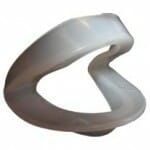
 The Tongue Stabilizing device or TSD attaches to the end of your tongue and does not require any additional fitting or adjustment steps. It’s a one-size-fits-all approach to controlling snoring. These devices take up very little room in the mouth and have quickly becoming a crowd pleaser. Once available only by prescription, you can now purchase them over the counter online. One such product is the
The Tongue Stabilizing device or TSD attaches to the end of your tongue and does not require any additional fitting or adjustment steps. It’s a one-size-fits-all approach to controlling snoring. These devices take up very little room in the mouth and have quickly becoming a crowd pleaser. Once available only by prescription, you can now purchase them over the counter online. One such product is the 

 Every year an increasing number of people are being diagnosed with Obstructive Sleep Apnea (OSA) and they have typically issued a CPAP machine which for years has been the gold standard for treating OSA. Unfortunately, many find their prescribed mask to be uncomfortable and end up storing the device away in a closet or they seek alternative treatment methods. One such alternative is the sleep apnea mouthpiece, also known as a mandibular advancement device. Lately, there has been a bit of confusion when it comes to exactly what a sleep apnea mouthpiece is and how it compares to commonly advertised mouth guards for snoring. The two devices are similar in nature but are they the same?
Every year an increasing number of people are being diagnosed with Obstructive Sleep Apnea (OSA) and they have typically issued a CPAP machine which for years has been the gold standard for treating OSA. Unfortunately, many find their prescribed mask to be uncomfortable and end up storing the device away in a closet or they seek alternative treatment methods. One such alternative is the sleep apnea mouthpiece, also known as a mandibular advancement device. Lately, there has been a bit of confusion when it comes to exactly what a sleep apnea mouthpiece is and how it compares to commonly advertised mouth guards for snoring. The two devices are similar in nature but are they the same? There are a number of similarities between the two devices. Technically speaking, they both are
There are a number of similarities between the two devices. Technically speaking, they both are  While they share a lot of the same attributes there are a few
While they share a lot of the same attributes there are a few At this point, you may be asking yourself if you can use a snoring mouthguard to treat your sleep apnea. After all, they are quite similar in nature and seem to perform the same function. One costs less than $100 while the other can cost several thousands of dollars. What’s the deal?
At this point, you may be asking yourself if you can use a snoring mouthguard to treat your sleep apnea. After all, they are quite similar in nature and seem to perform the same function. One costs less than $100 while the other can cost several thousands of dollars. What’s the deal?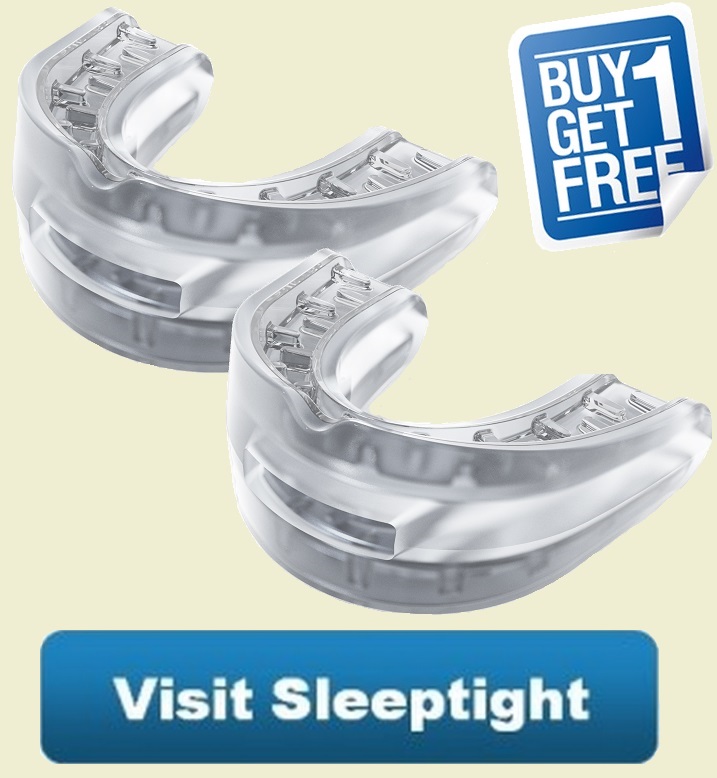
 There is one question that is often asked by anyone interested in using an oral appliance to control their snoring and that question is “Can you choke on a snoring mouthpiece?”. This is, of course, an excellent question because after all, safety should always be your number one concern and the last thing that you want to do is create a bigger problem than you originally started with.
There is one question that is often asked by anyone interested in using an oral appliance to control their snoring and that question is “Can you choke on a snoring mouthpiece?”. This is, of course, an excellent question because after all, safety should always be your number one concern and the last thing that you want to do is create a bigger problem than you originally started with.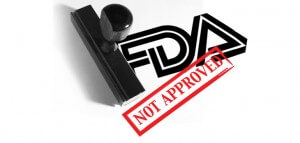 Since not all mouthguards are created equal, the best way to ensure your safety is to purchase s device that have been cleared by your local health regulatory agency such as the
Since not all mouthguards are created equal, the best way to ensure your safety is to purchase s device that have been cleared by your local health regulatory agency such as the 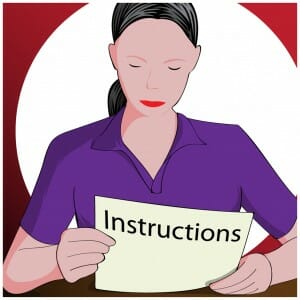 Only buy products that have been approved by a respectable government regulatory agency such as the FDA. Non-approved devices are most likely cheaply mass produced and are potentially hazardous.
Only buy products that have been approved by a respectable government regulatory agency such as the FDA. Non-approved devices are most likely cheaply mass produced and are potentially hazardous. After mentioning any anti-snoring device the first question that most people naturally ask is “Does it actually work?”. The short answer is “yes” Many of these mouthpieces are in fact an effective means to treat snoring. More specifically, they treat common snoring in the majority of cases. For most, the source of snoring originates at the back of the throat in the area between the soft palate and the airway. The
After mentioning any anti-snoring device the first question that most people naturally ask is “Does it actually work?”. The short answer is “yes” Many of these mouthpieces are in fact an effective means to treat snoring. More specifically, they treat common snoring in the majority of cases. For most, the source of snoring originates at the back of the throat in the area between the soft palate and the airway. The 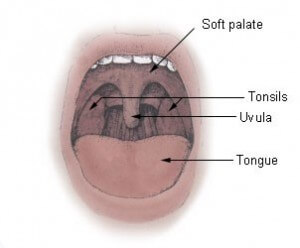 In the majority of cases, this area of the throat is the culprit and a mouthpiece may be the solution. This type of device actually tightens these muscle by holding the lower jaw slightly forward as you sleep thereby preventing the soft palate from flapping around. How can you tell if holding the lower jaw forward will stop your snoring? Try this now (unless you’re surrounded by coworkers). Imagine yourself sound asleep and snoring loudly. Try to replicate the sound of snoring out loud. Continue doing this while using your muscles to push your lower jaw out as far as you can stretch it. Does the sound of snoring become more subtle or stop? If so then your soft palate may be the source of your snoring and a mouthpiece just may the solution. In other cases, factors such as enlarged tonsils, a deviated septum, physical obstruction, or simply the anatomy of your airway are to blame. The mouthpiece is not effective if these less common factors are causing your snoring.
In the majority of cases, this area of the throat is the culprit and a mouthpiece may be the solution. This type of device actually tightens these muscle by holding the lower jaw slightly forward as you sleep thereby preventing the soft palate from flapping around. How can you tell if holding the lower jaw forward will stop your snoring? Try this now (unless you’re surrounded by coworkers). Imagine yourself sound asleep and snoring loudly. Try to replicate the sound of snoring out loud. Continue doing this while using your muscles to push your lower jaw out as far as you can stretch it. Does the sound of snoring become more subtle or stop? If so then your soft palate may be the source of your snoring and a mouthpiece just may the solution. In other cases, factors such as enlarged tonsils, a deviated septum, physical obstruction, or simply the anatomy of your airway are to blame. The mouthpiece is not effective if these less common factors are causing your snoring. Comparatively speaking, when used properly a mouthguard for snoring is an effective and safe anti-snoring solution. It does not involve any risky medical procedures and has been used to treat snoring and obstructive sleep apnea for over
Comparatively speaking, when used properly a mouthguard for snoring is an effective and safe anti-snoring solution. It does not involve any risky medical procedures and has been used to treat snoring and obstructive sleep apnea for over  There are various snoring treatment options available, some are more expensive and require surgery while others are fairly inexpensive and require no surgery. While professionally fitted custom devices can cost over $1500, most simple at home do-it-yourself boil and bite products cost no more than $70. Better constructed devices which tend to be more reliable and last longer typically cost between $70 and $200. The more expensive models are generally more customizable, better built and often last longer. Most snorers purchase a less expensive device at first just to see if a mouthpiece will work and then move up to a more expensive one which offers a better fit. Either type of device will work. Here is a cost comparison of these mouthguard remedies to other possible snoring solution:
There are various snoring treatment options available, some are more expensive and require surgery while others are fairly inexpensive and require no surgery. While professionally fitted custom devices can cost over $1500, most simple at home do-it-yourself boil and bite products cost no more than $70. Better constructed devices which tend to be more reliable and last longer typically cost between $70 and $200. The more expensive models are generally more customizable, better built and often last longer. Most snorers purchase a less expensive device at first just to see if a mouthpiece will work and then move up to a more expensive one which offers a better fit. Either type of device will work. Here is a cost comparison of these mouthguard remedies to other possible snoring solution: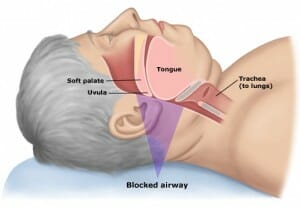 While simple snoring is considered a harmless act in most instances, other times it is actually a symptom of a more serious underlying issue. There are numerous possibilities but the more common problem is Obstructive Sleep Apnea (OSA) which occurs when the airway becomes completely blocked off and you stop breathing for several seconds. This can happen dozens of times throughout the night, robbing your brain of much-needed oxygen. In some instances, a person with sleep apnea will wake up gasping for air several times during the night and not even recall these events in the morning when they wake up. It is estimated that more than 18 million Americans
While simple snoring is considered a harmless act in most instances, other times it is actually a symptom of a more serious underlying issue. There are numerous possibilities but the more common problem is Obstructive Sleep Apnea (OSA) which occurs when the airway becomes completely blocked off and you stop breathing for several seconds. This can happen dozens of times throughout the night, robbing your brain of much-needed oxygen. In some instances, a person with sleep apnea will wake up gasping for air several times during the night and not even recall these events in the morning when they wake up. It is estimated that more than 18 million Americans  As with any medical device,
As with any medical device, 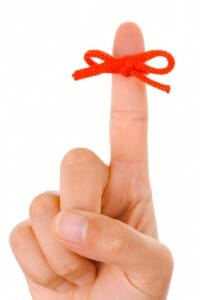 Often times, people purchase an antisnoring device without first considering the fact that it must be worn nightly in order to keep the snoring away. While wearing one is usually not very difficult, the snorer must form the habit of wearing one. You must remember to install it at night and subsequently remove and clean it in the morning prior to storing. This commitment is often overlooked and as a result, the device may be used for a few days or few weeks before being permanently stored away. If you are planning to use one of these mouthguards, keep in mind that this is a long-term commitment and wearing one must become a habit.
Often times, people purchase an antisnoring device without first considering the fact that it must be worn nightly in order to keep the snoring away. While wearing one is usually not very difficult, the snorer must form the habit of wearing one. You must remember to install it at night and subsequently remove and clean it in the morning prior to storing. This commitment is often overlooked and as a result, the device may be used for a few days or few weeks before being permanently stored away. If you are planning to use one of these mouthguards, keep in mind that this is a long-term commitment and wearing one must become a habit.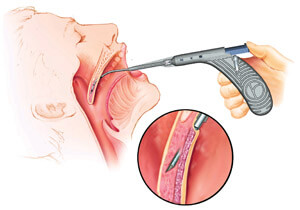
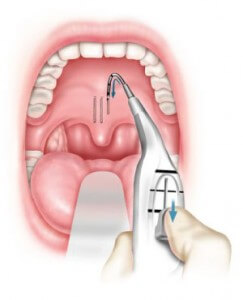 The Pillar Procedure is conducted at your doctor’s office and typically takes between 15 and 20 minutes total. Three to five small implants are inserted into the back of your throat where the hard palate meets the soft palate. These implants are constructed of polyester fibers that are tightly woven together into a stiff rod-like thread which measure just under 3/4″ of an inch long by 1.5 millimeters thick. The entire procedure is conducted using local anesthetics and is relatively painless.
The Pillar Procedure is conducted at your doctor’s office and typically takes between 15 and 20 minutes total. Three to five small implants are inserted into the back of your throat where the hard palate meets the soft palate. These implants are constructed of polyester fibers that are tightly woven together into a stiff rod-like thread which measure just under 3/4″ of an inch long by 1.5 millimeters thick. The entire procedure is conducted using local anesthetics and is relatively painless.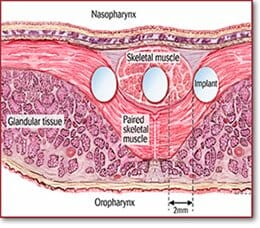

 As you can imagine, after the procedure you are going to have a bit of a sore throat. In addition, an infection may also occur which is often treated using antibiotics. Then there are instances where the body rejects the pillars and they actually work their self out and protrude from the back of your throat. If this happens they can be removed by your doctor.
As you can imagine, after the procedure you are going to have a bit of a sore throat. In addition, an infection may also occur which is often treated using antibiotics. Then there are instances where the body rejects the pillars and they actually work their self out and protrude from the back of your throat. If this happens they can be removed by your doctor. Unfortunately, the majority of insurance companies recognize this as a cosmetic procedure. Because of this, expect to pay out of pocket as most insurance companies do not provide coverage.
Unfortunately, the majority of insurance companies recognize this as a cosmetic procedure. Because of this, expect to pay out of pocket as most insurance companies do not provide coverage. The Pillar Procedure offers a unique approach to control snoring and mild to moderate cases of sleep apnea. In theory, it seems to be a plausible solution that may work for some.
The Pillar Procedure offers a unique approach to control snoring and mild to moderate cases of sleep apnea. In theory, it seems to be a plausible solution that may work for some. Every time I see a sales page that claims a “96% or 99%” customer satisfaction rate, I often wonder how many people make a purchase based on the logic that if it works for 96% of people then it should work for me. Nothing could be further from the truth.
Every time I see a sales page that claims a “96% or 99%” customer satisfaction rate, I often wonder how many people make a purchase based on the logic that if it works for 96% of people then it should work for me. Nothing could be further from the truth. In most cases snoring is simply benign snoring, meaning well… you simply snore. Other times it can be a sign of a potentially serious medical condition. Attempting to silence a snoring problem may be a mistake if you are suffering from a condition such as
In most cases snoring is simply benign snoring, meaning well… you simply snore. Other times it can be a sign of a potentially serious medical condition. Attempting to silence a snoring problem may be a mistake if you are suffering from a condition such as  This may be a shocker to you but did you know that the majority of anti-snoring mouthpieces have not been clinically tested? How could this be?
This may be a shocker to you but did you know that the majority of anti-snoring mouthpieces have not been clinically tested? How could this be? Suggesting that over-the-counter mouthguards are the cure for sleep apnea is treading in dangerous waters and most manufacturers have figured this out by now.
Suggesting that over-the-counter mouthguards are the cure for sleep apnea is treading in dangerous waters and most manufacturers have figured this out by now. Why did I choose to highlight such information? My reasoning can be explained using two words – Caveat emptor. Latin for “Let the buyer beware”.
Why did I choose to highlight such information? My reasoning can be explained using two words – Caveat emptor. Latin for “Let the buyer beware”.
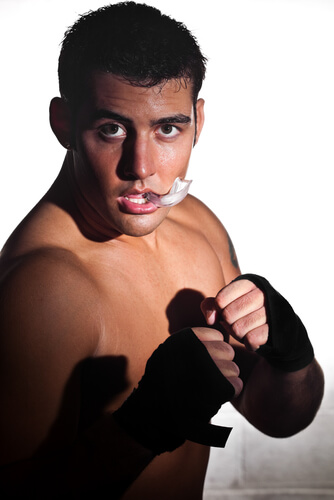 Ready-made mouthguards offer the least amount of protection and are not adjustable while boil and bite athletic guards allow one to create an impression of their teeth by heating the device in boiling water, placing it into the mouth and applying pressure by pushing against the gums while sucking in. These are often criticized by professionals because biting down too hard during the molding process can cause the thermoplastic material to stretch thin, reducing the effectiveness of the device. Professionally fitted sports guards offer the greatest amount of protection and are typically fitted by your dentist by taking an impression of your teeth.
Ready-made mouthguards offer the least amount of protection and are not adjustable while boil and bite athletic guards allow one to create an impression of their teeth by heating the device in boiling water, placing it into the mouth and applying pressure by pushing against the gums while sucking in. These are often criticized by professionals because biting down too hard during the molding process can cause the thermoplastic material to stretch thin, reducing the effectiveness of the device. Professionally fitted sports guards offer the greatest amount of protection and are typically fitted by your dentist by taking an impression of your teeth.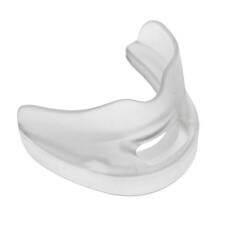
 You may have compared the athletic guard to the snoring guard and wondered what’s the difference? There is one thing that they both have in common which is the material from which they are constructed. Aside from this, they are actually quite different. Here are a few of the differences between the two:
You may have compared the athletic guard to the snoring guard and wondered what’s the difference? There is one thing that they both have in common which is the material from which they are constructed. Aside from this, they are actually quite different. Here are a few of the differences between the two: